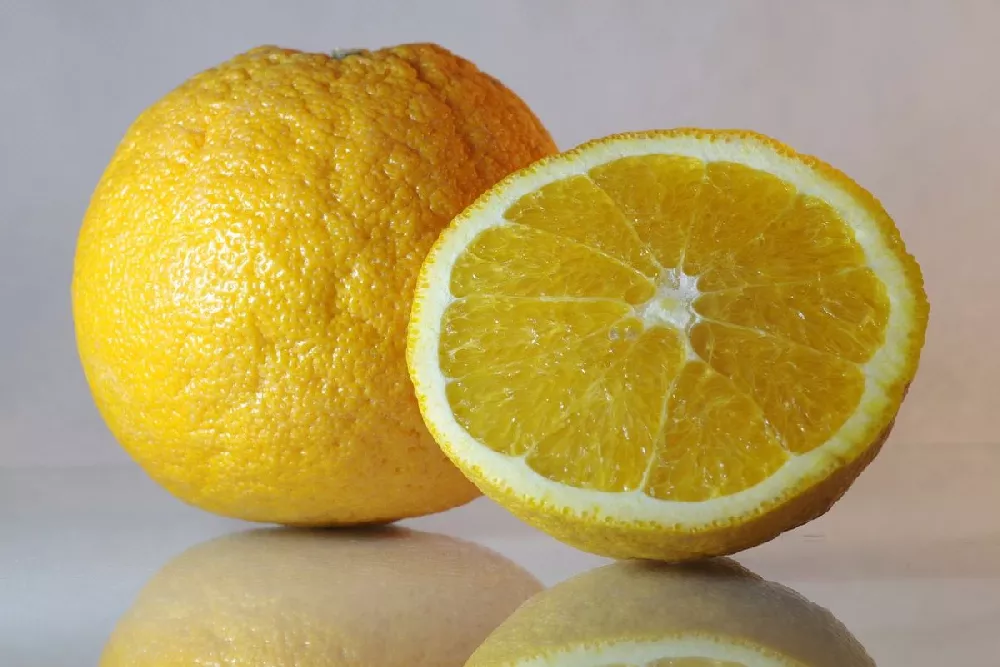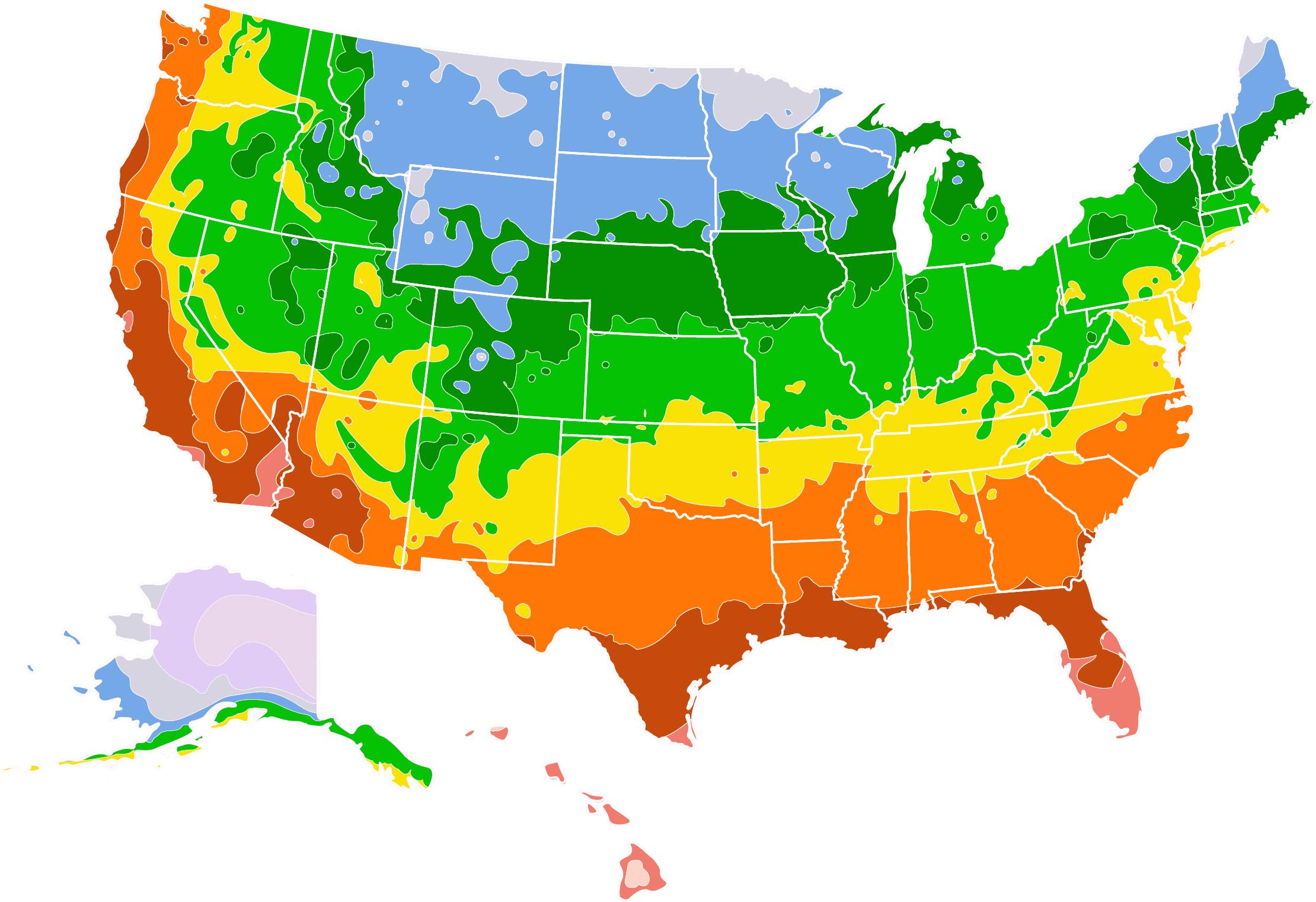- Home >
- Fruit Trees >
- Yuzu Tree
Yuzu Tree for Sale - Buying & Growing Guide
If you're looking for a distinctive citrus tree to grace your garden with both good looks and luscious fruit, consider the Yuzu Tree, Citrus junos. Far less common than lemons or limes, it has a taste that blends the best of both, in an attractive yellow package that is about the size of an orange. Yuzu is a smaller tree, and it's easy to grow and care for. It takes well to container growing and thus can be an option for gardeners in northern regions, where it's difficult to grow citrus. The yuzu fruit is often used in Japan in cooking and baking. The pulp can be juiced, and the thick skin can be used to add zest and flavor to recipes. Here are a few more reasons to try this unique cultivar in your garden:
- In spring, the tree is covered with delicate white blooms that attract the eye.
- Glossy dark green leaves make it a good addition to cottage gardens and perennial beds.
- The fruit has a strong, lemony fragrance, and the oil is used in Asia as an additive for bathing.
Enter your zip code to find nearby stores that may carry this plant.
Plant Care
Sunlight

The Yuzu Tree needs at least four hours of direct sunlight a day but will produce more with six or more hours of sun.
Watering
Water your Yuzu Tree weekly, giving it one inch of water at a time; potted trees may need more.
Fertilizing

Fertilize during the growing season with a product designed for citrus trees.
Planting and Care
Planting instructions
Choose a spot for planting in acidic soil that drains well and that gets at least six hours of direct sunlight a day. Unpot your sapling and tease out any encircling roots, which can girdle the tree and slowly kill it. Dig a hole that’s as deep as the root ball and twice as wide. Place your tree in the hole, spreading out the roots. Holding it upright and steady, fill in around the roots with topsoil, tamping down as you go to eliminate air pockets. Water thoroughly. Apply a two to three-inch layer of organic mulch around the root zone to conserve moisture and hinder weed growth but keep it from touching the trunk to avoid problems with rot.
Watering and nutrients
Once established, your Yuzu Tree needs about an inch of water a week, either from rain or supplemental watering. If you’re unsure whether you need to water it, check the soil about two inches below the surface. If it’s dry there, give your tree a drink. Fertilize your Yuzu in spring and throughout the growing season with a balanced, slow-release product that is designed for citrus trees. In winter, you can cut back on fertilizing.
Pollination
Bees, wasps and other pollinators are drawn to the Yuzu Tree’s small white flowers in spring. Yuzu trees are monoecious, or self-fertile, meaning that you will be able to harvest fruit even if you only have one tree. You will, however, reap a larger harvest from each tree if you have two or more planted in close proximity to each other.
Pruning
Prune out dead, diseased or damaged limbs whenever you see them and any suckers that appear at the base of the trunk. You may also prune the interior of the canopy to remove branches that are rubbing against each other and to allow for better air circulation through the tree. This is best done after the tree bears fruit.
Pests and diseases
Pests that may be seen on your Yuzu tree include several types of scale insects, mites and aphids, which can be controlled with horticultural oil. Diseases that are common to citrus trees include citrus black spot, which is a fungal disease, and citrus canker, which is caused by bacteria. To keep fungal issues at a minimum, always water at the base of the trunk and keep the area around the trunk free of leaf litter or other debris.
Harvesting
Yuzu fruits are harvested in the fall, usually in October and November. When ripe, the fruit will turn from green to a bright yellow and will pull easily off the tree. Store in a cool location and use your Yuzu fruits within a week or so.
Achieving maximum results
If you live north of USDA hardiness zone eight, you’ll want to grow your Yuzu Tree in a container that can be brought inside when the temperatures go below 20 degrees Fahrenheit. This isn’t difficult and will allow you to harvest tasty fruit as far north as New England or the Great Lakes region. Choose a pot for your Yuzu that is about twice the size of the root ball, with large drainage holes in the bottom. Use a good-quality potting mix and plant according to our directions above. Plan on repotting your Yuzu in fresh soil every four or five years to keep it healthy. Also, note that potted plants tend to need more supplemental water and fertilizer than those planted in the ground. In the winter, bring your tree inside and place it in a sunny window, turning it occasionally so that all sides get some sun.
FAQs
How big does the Yuzu Tree get?
Yuzu trees are petite, reaching a mature height of only six to eight feet, with a mature width of 8 to 10 feet. A potted specimen may remain slightly smaller. If planting your Yuzu near your home or another structure, be sure to leave space for the canopy, which is broad, by spacing it at least six feet away from the building.
Where can I grow the Yuzu Tree?
Yuzu trees can be grown outdoors anywhere the temperatures don't go below 20 degrees Fahrenheit. This makes it compatible with USDA hardiness zones 8 through 11. It can, however, be container-grown in zones 4 through 11, which cover almost all of the continental U.S.
Can I eat the Yuzu fruit's pulp?
You can, but keep in mind it will have the tartness of a lemon or lime, and it is also very seedy. A better way to use the fruit is in cooking, as the juice and rind are highly prized in Asian cuisine. The yuzu fruit is an integral addition to Japanese ponzu sauce, and yuzu vinegar is very popular. Slivered yuzu rind is used in miso soup and other common Asian dishes.
Compare Similar Products
You can't add more Product Name - Product size to the cart.
OK








